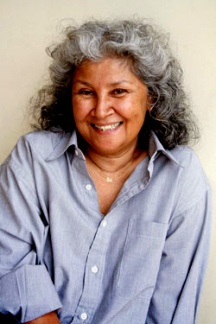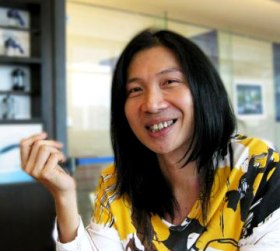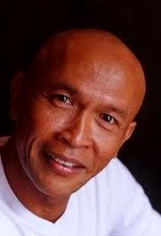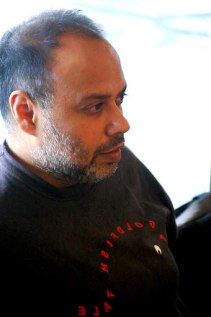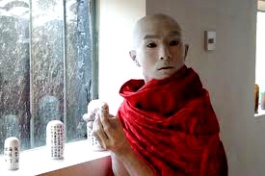Antares congratulates Actors Studio on their triumphant production of RASHOMON
Ten days before Rashomon opened, a horrendous flash flood wiped out the Actors Studio’s Plaza Putra facilities: two theaters, the Actors Studio Academy, the Coffee Shoppe, and Joe Hasham’s chic new office. However, none of this appeared to have dampened their spirits as Faridah Merican personally welcomed the first night audience to her milestone directorial effort.
“Milestone” in that Faridah Merican’s realization of Ryunosuke Akutagawa’s classic short story (to a script intelligently adapted by Joe Hasham) proved impressive on many fronts – aesthetic, dramaturgical, and the purely technical – and took Malaysian stagecraft to a new level of professionalism.
Hasham’s script adaptation was largely inspired by a close study of Akira Kurosawa’s 1950 film version of Rashomon.
The cinematic influence was further underscored by the use of a live orchestra playing what was pretty much a full-scale “soundtrack” to the action. The original music composed by Bernard Goh and Deborah Tee was artfully interpreted by Gideon on guitar, Yii Kah Hoe on flute and shakuhachi, Tay Chiew Lee on keyboard, and Jimmy Ch’ng on percussion. Indeed, the passion, precision, and sheer beauty of the orchestra’s performance was so outstanding they almost stole the show from the actors. I’d gladly sit through Rashomon a couple more times just to enjoy the music.
Working with a highly accomplished cast, Faridah was free to focus on maintaining the dramatic flow and credibility of the characterizations. Ramli Hassan was a natural choice for the charismatic rôle of the bandit Tajomoru. He brought to the character an animal magnetism that aptly personified the id – instinctual, cunning, dangerous, yet not without a certain feral innocence and candor.
Merissa Teh was absolutely convincing as the Wife. Deceptively delicate, but fully aware of her feminine power, she portrayed the adaptability and fluidity of the lifeforce when the brittle shell of social decorum and cultural conditioning is cracked. One might even surmise that the Wife manifested her own rape in order to free her wild spirit from the sterile bonds of a passionless marriage. We are indeed blessed to have Merissa Teh grace the local stage with her unassuming beauty and impeccable talent as an actress
The Samurai represented the last vestiges of a feudal tradition – desperately clinging to his dignity and manhood against the unpredictable ravages of swiftly changing circumstances. To this challenging rôle, Ari Ratos brought an extraordinary integrity and humanity. Such is his skill as an actor that even as we empathized with the Samurai’s misfortune, we secretly rejoiced at his undoing, which symbolized the collapse of rigid tradition, of law and order, and the façade of respectability.
Lee Swee Keong’s lyrical movements – and the fact that he speaks exclusively in Mandarin – defines the Monk as some sort of superego, attempting to extract clarity, truth, and unity from the morass of contradictory data that constitutes the samsaric world. A consummate dancer trained in buto, Swee Keong’s intense dedication to his craft stands him in equally good stead as an actor. His noble bearing and serene demeanor lent credence to his spiritual authority and it mattered little that one may not have understood his lines, so clearly focused was his body language.
By the play’s end it becomes clear that all the main characters – the Bandit, the Wife, the Samurai, and the Monk – are really integral aspects of the human psyche in a dynamic interplay of perspectives. Akutagawa’s detachment from his characters gives the lie to the validity of an “objective” viewpoint. Reality is ultimately a subjective experience – and only the Monk’s spiritual grounding can encompass the drama and confusion of the sensory world and transcend it all. Of course, this is merely one way to interpret the multi-layered Rashomon – a work that undermines all notions of certainty while celebrating the infinite complexity and exquisite vulnerability of the human psyche. The Samurai and his Wife represent, perhaps, the male and female aspects of the ego.
The Woodcutter – a sort of Everyman polarized between truth and falsity – was admirably played by Terence Swampillai, who brought a tangible organicity and warmth to the character. Indeed, Swampillai’s performance was nothing short of award-winning, reminding us that there is truly no such thing as a small rôle – only great or indifferent acting.
I was surprised to find in the program no biographical reference to Caecar Chong – whose animated performance as the Medium and as an overzealous law enforcement officer was a memorable dramatic highlight. His exuberance injected high-octane energy into the proceedings and contributed significantly to the dynamic flow. As the second woodcutter, Mark Wong was unremarkable but did a sufficiently good job so as not to attract undue attention.
The special part of the Gatekeeper was inserted to serve as a sort of “Japanese chorus” cum narrator. Gan Hui Yee’s physical movements were indeed wonderful to behold, but her difficulties with English diction (coming as she does from a Chinese theater background) were a bit distracting in the opening scene. Fortunately, she eventually warmed up and began projecting her voice much better.
One suspects that the Monk’s two disciples (and lantern-bearers) were included mainly for visual effect. Nonetheless, in these auxiliary rôles, Kiea Kuan Nam and Ian Yang gave their best, especially in the choreographed sequences. I don’t usually comment on the costume design (unless it sticks out like a sore thumb), but in this instance, Cinzia Ciaramicoli’s exquisite taste and flair made the performers’ outfits an integral part of the lush visual experience.
Beautifully lit by the award-winning Mac Chan, the splendid set was conceived and constructed by a team comprising Actors Studio general manager Teoh Ming Jin, special effects expert K.L. Cheah, and the director herself. The clever use of bamboo and rear-projected foliage imagery effectively created the forest scenes; but I was most impressed by the thunderstorm effects which featured real water cascading through holes in a bamboo rafter into a hidden trough – leading a member of the audience to quip during the intermission: “Looks like Joe and Faridah are trying to drown THREE theaters!”
I left the theater elated by the overall excellence of the production and moved by the Actors Studio’s resilient spirit – Joe and Faridah’s capacity to seize yet another artistic triumph from the face of such recent tragedy.
24 June 2003
Rashomon received Boh Cameronian Arts Awards for Best Costume Design, Best Set Design, Best Original Music, and Best Lighting.
Review of Rashomon by Choy Su-Ling

